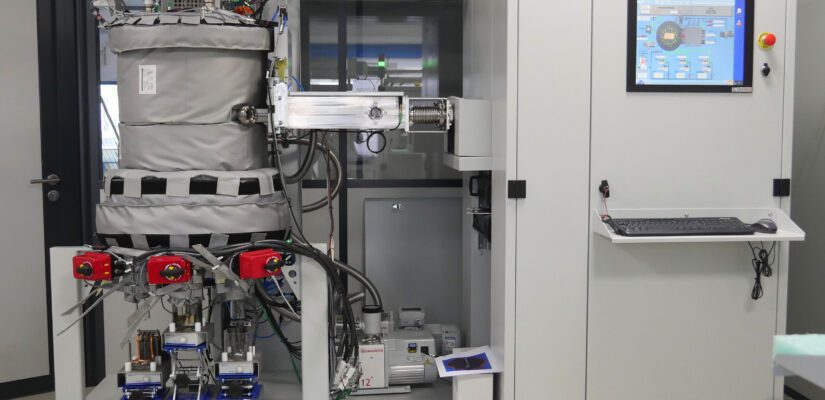Revolutionizing Oxide Thin Film Manufacturing with Sybilla

posted Oct 16 2023
Unveiling ABCD’s Sybilla: The Nexus of Technology and Expertise
ABCD Technology has been a dynamic player in the oxide thin film equipment manufacturing arena since 2006. Over the years, it has meticulously developed a unique expertise, fostering the creation of its disruptive Sybilla equipment. This novel tool is intricately designed to address new thin film materials, thereby catalyzing miniaturization and integration of new functionalities in alignment with the “more than Moore” vision.
Sybilla’s Core: Multifunctional Oxide Thin Films Material Growth
With a focus on propelling advancements across various fields such as Microelectronics, Photonics, Biomedicine, Security, MEMS, and Renewable Energies, the Sybilla equipment becomes a linchpin for supporting new multi-functional oxide thin films materials growth. The equipment is foundationally based on Chemical Beam Epitaxy (CBE) technology and improved with a Laser-assisted process (CBE-LA). This involves utilizing line-of-sight beams of metalorganic precursors in high vacuum, potentially supplemented with laser beam irradiation, to enhance the growth and properties of the thin films. Comprising several thermo-regulated precursor reservoirs, Sybilla provides a tunable vapour pressure in a pre-chamber which acts as a gas injector system, thus maintaining a precise control of species impinging rates angular distribution and effusing rates.
Ushering in an Era of Sustainable and Efficient Thin Film Production
Boasting high levels of performance and unique assets for growing thin films, Sybilla equipment is instrumental in achieving uniform multi-element thin films, enabling additive growth with in-situ micro and sub-micropatterning, and speeding up research of new materials through powerful combinatorial approaches. Moreover, its ability to exploit reverse engineering of flows from identified combinatorial conditions to obtain high homogeneity in thickness and composition across full wafers cannot be overstated. Furthermore, the additive growth not only addresses issues like patterning of oxide thin films without degrading their properties, but also minimize material waste and limits the use of toxic chemicals paving the way for a more eco-sustainable thin film production. The potentiality of Sybilla to orchestrate a revolution in the oxide thin film industry is not only anticipated but also fervently believed in, as it amalgamates complex combinatorial production of fully monolithically integrated devices that are pivotal for the future for further miniaturization.
